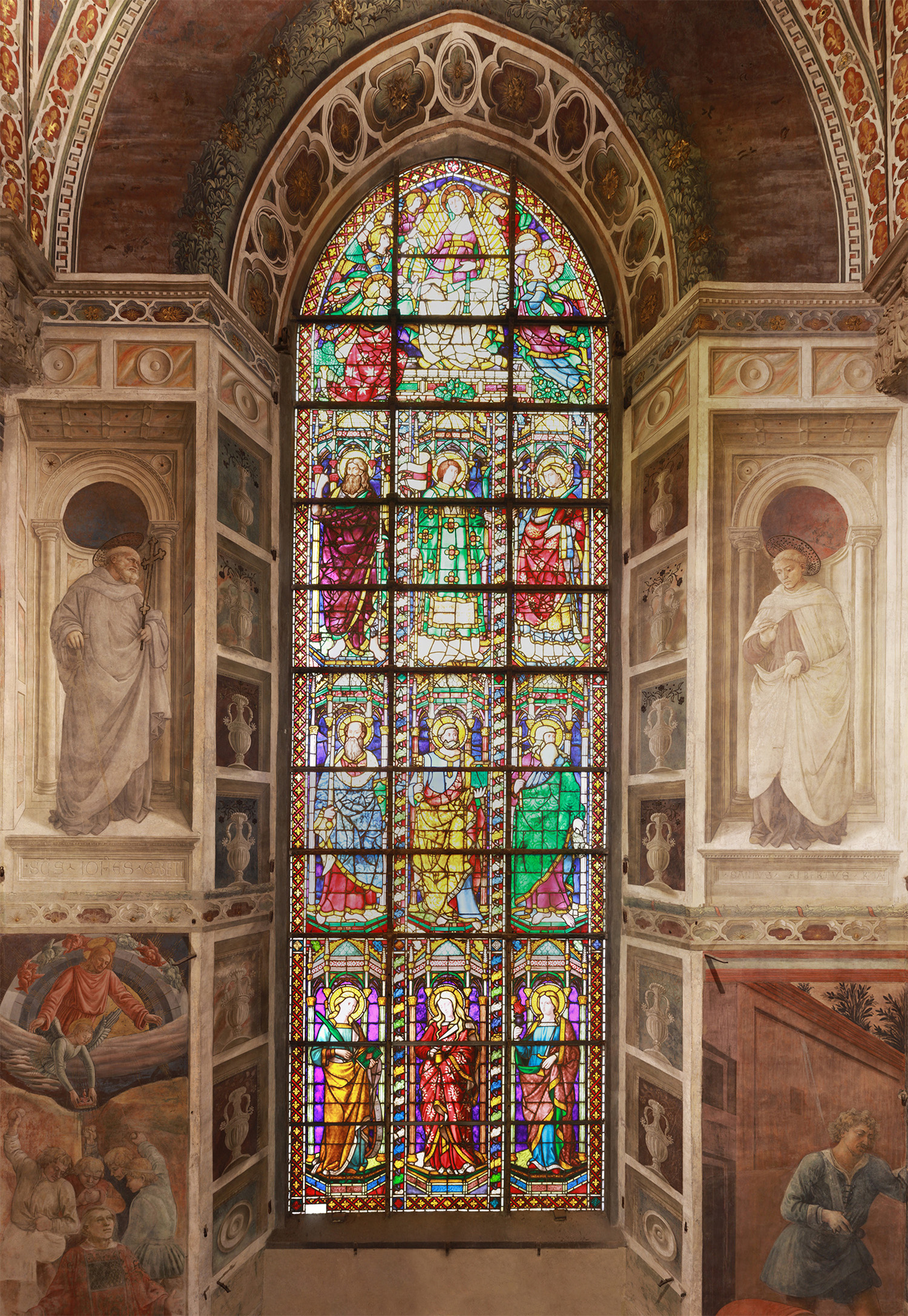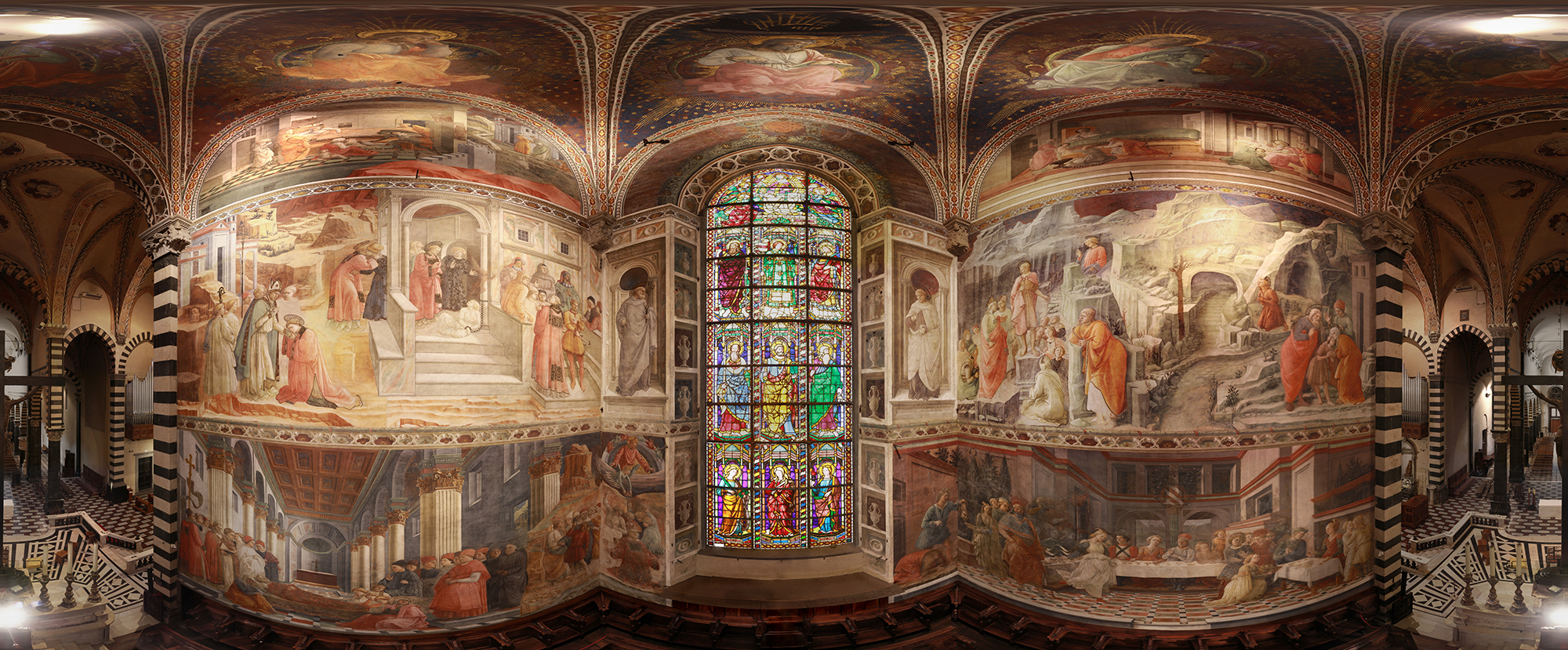
“the most excellent of all his things”
At the peak of his fame, in 1452 Fra Filippo was asked by the City of Prato to fresco the main chapel of the Church of Santo Stefano, now the Cathedral, after Fra Angelico had turned down the offer. The famous cycle with the Lives of St. Stephen and St. John the Baptist – “the most excellent of all his things”, as Vasari defines them – was painted by Lippi and his collaborators (among whom only Fra Diamante is mentioned in any documents) from 1452 to ’65, with long pauses when he had to work on other contracts or due to his complicated family life. The composition of the scene is quite free, with a complex, imposing layout, and spaces dilated by an open perspective, in an original relationship between figures and setting. Where perspective is applied the form is not rigorous (often there are multiple vanishing points), and more importance is given to the theatrical effects and continuity of the story being narrated. The monumental conception of the figures (that according to Vasari makes Lippi the precursor of 16th century art and of Michelangelo), does not prevent them from being light, thanks to the liquid, luminous brushstroke and vaporous fabrics.
The ability of Lippi to improvise and adjust the effect of the compositions directly while he worked meant that he often had to make additions (even whole groups of figures) to the finished parts of the fresco, painting over the dry plaster. Most of these additions have been lost in ancient attempts to clean the frescoes, while the dark lines that underline the hems, decorations and halos are applications in wax, and were originally covered in gold leaf. The lovely stained glass window of the chapel, painted in 1459 by Lorenzo da Pelago, was designed by Lippi; the lunette shows the Madonna of the Assumption giving her belt to St. Thomas, while the three orders underneath are shrines with Saints (the ones in the last row were painted in 1871).


